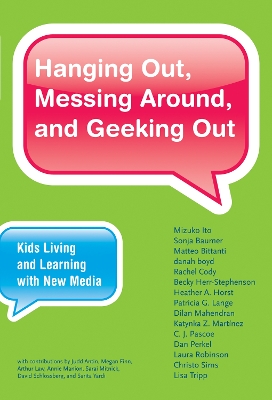The John D. and Catherine T. MacArthur Foundation Series on Digital Media and Learning
2 total works
How the influential industry that produced such popular games as Oregon Trail and KidPix emerged from experimental efforts to use computers as tools in child-centered learning.
Today, computers are part of kids' everyday lives, used both for play and for learning. We envy children's natural affinity for computers, the ease with which they click in and out of digital worlds. Thirty years ago, however, the computer belonged almost exclusively to business, the military, and academia. In Engineering Play, Mizuko Ito describes the transformation of the computer from a tool associated with adults and work to one linked to children, learning, and play. Ito gives an account of a pivotal period in the 1980s and 1990s, which saw the rise of a new category of consumer software designed specifically for elementary school-aged children. "Edutainment" software sought to blend various educational philosophies with interactive gaming and entertainment, and included such titles as Number Munchers, Oregon Trail, KidPix, and Where in the World Is Carmen Sandiego?.
The children's software boom (and the bust that followed), says Ito, can be seen as a microcosm of the negotiations surrounding new technology, children, and education. The story she tells is both a testimonial to the transformative power of innovation and a cautionary tale about its limitations.
An examination of young people's everyday new media practices-including video-game playing, text-messaging, digital media production, and social media use.
Conventional wisdom about young people's use of digital technology often equates generational identity with technology identity: today's teens seem constantly plugged in to video games, social networking sites, and text messaging. Yet there is little actual research that investigates the intricate dynamics of youths' social and recreational use of digital media. Hanging Out, Messing Around, and Geeking Out fills this gap, reporting on an ambitious three-year ethnographic investigation into how young people are living and learning with new media in varied settings-at home, in after-school programs, and in online spaces.
Integrating twenty-three case studies-which include Harry Potter podcasting, video-game playing, music sharing, and online romantic breakups-in a unique collaborative authorship style, Hanging Out, Messing Around, and Geeking Out is distinctive for its combination of in-depth description of specific group dynamics with conceptual analysis.

